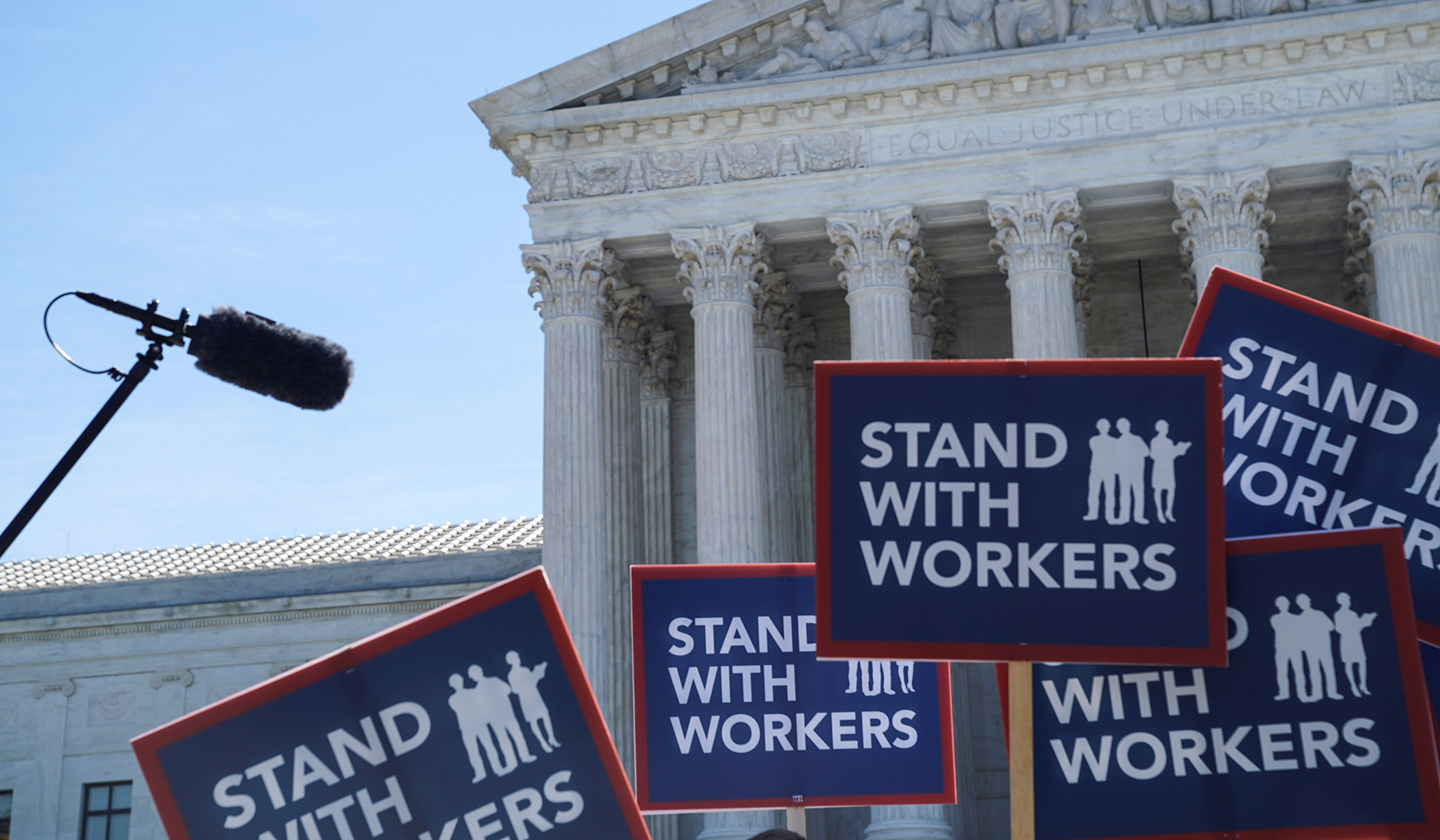


The Supreme Court decision Janus v. AFSCME is five years old this month. It said that a public-sector worker cannot be forced to subsidize union activities unless he or she “affirmatively consents to pay.” No longer would workers be coerced to pay dues or agency fees to a union that they may or may not support.
Maxford Nelson of the Freedom Foundation, a conservative union-watchdog group, has crunched the numbers and found that 733,745 workers have left the four largest public-sector unions since the Janus decision, which is a decline of about 10 percent. Those four are the National Education Association (NEA), American Federation of Teachers (AFT), American Federation of State, County, and Municipal Employees (AFSCME), and Service Employees International Union (SEIU).
The NEA is the largest of the four. It had 2,666,339 members pre-Janus and lost over 200,000 to come in at 2,463,076 in 2022. AFCSME has experienced the largest decline in membership, both in absolute and percentage terms, declining by 204,690 members, or 16.3 percent, since 2017. The SEIU also represents many private-sector workers, but it, too, has lost about 200,000 members since 2017. The AFT started at 1,317,434 members in 2017 and has declined by about 125,000 since then, and it has retained its revenues slightly better than the NEA. The membership numbers are all for working members and do not include retirees.
As Nelson points out, 27 states were already right-to-work when Janus was decided, so public-sector workers there already had the choice to pay or not pay. “Consequently, for the unions’ nationwide membership to decline by 10 percent, membership among the portions of its public-sector members affected by Janus would have had to plummet even further, which is precisely what the data show,” he writes. He gives the example of Washington State, which is not right-to-work, where public-sector-employee union membership dropped from nearly 100 percent to only 61 percent.
Note that these declines are significant, but not enormous. The unions are feeling the squeeze on their budgets, but they’re still raking in hundreds of millions of dollars in revenue. Progressive claims that Janus would destroy unions were incorrect. Also incorrect was the “free-rider” argument that says that, without compelling dues or agency fees, nearly all workers will refuse to pay while still reaping the benefits of being in a union workplace. Fewer are paying, but plenty still are.
Janus was about restoring some common sense to labor-relations law and making sure that unions are voluntary organizations. Unions actually have to persuade people to join them now, just like any other group, rather than using special privileges from government to skim money off of people’s paychecks without their consent.
Nelson points out that unions are out of practice in the art of persuasion. The number of state- and local-government jobs has increased in the past five years at the same time union membership has declined, indicating limited success in persuading new workers to join. That’s partly why, in some cases, they have resorted to forgery to keep workers paying dues.
Rather than adjust to the new reality, unions keep complaining about Janus and have doubled down on progressive political advocacy. The SEIU is especially active on any number of left-wing social campaigns, and AFT president Randi Weingarten is a power-player in Democratic politics, urging the school-closure policies that blue states heavily adopted during the pandemic. The NEA devotes about 50 percent of its expenditures to politics. As Keri Ingraham wrote for NR last year, “Given that the NEA spends twice as much on politics (almost all of which is devoted to Democrats) as on representing its members, the union resembles a political, rather than membership, organization.”
That’s why they must be voluntary to join. Public-sector unions engage in political speech, and the First Amendment prevents that speech from being coerced. Janus was a win for common sense, the Constitution, and workers.
